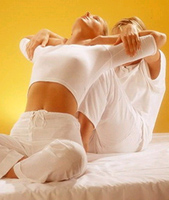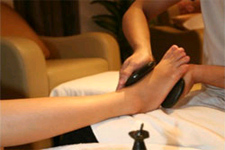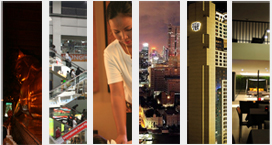Massage Therapy
Thailand considered as the Land of Healthy Smile, introduces you to the miracles of medical procedures and the holistic treatment of mind and soul.
Massage
One of the world’s great massage traditions.
A blending of the technique of manipulating the energy which travels throughout your body (meridians in Chinese medicine, sen lines in Thai massage), and the yoga traditions of India. And it’s practiced in different forms reflecting different schools and traditions.
Wonderful for the legs and overall balancing of energy, it’s done with the person clothed, without the use of oil. Your energy lines are pressed by the therapist’s thumbs, and then the palms, in a gentle and complete pattern.
After your body is loosened up, gentle stretches are done. Different body areas are massaged more than one time, so two hours is not excessively long for a complete treatment.
It’s good for tight muscles, low energy levels, and stress. But the stretching involved isn’t good for people with certain back problems, such as herniated disks and fused spinal bones. And if you aren’t flexible, then you may be a little sore the next day.
Current Practice
In Thailand, Thai massage is one of the branches of Traditional Thai Medicine (TTM) since a few years recognized and regulated by the government, and is widely considered to be a medical discipline used for the treatment of a wide variety of ailments.
On the other hand, Thai massage is also practiced and taught by a number of non-medical massage technicians in the spa and tourism industries. In North America and Europe, an increasing number of practitioners and teachers of Thai massage have emerged since the 1990s. In Europe, the United States, Thai massage is a growing modality among clients of massage clinics and massage therapists seeking continuing education.
History
The founder of Thai massage and medicine is said to have been Shivago Komarpaj (Jīvaka Komarabhācca), who is said in the Pāli Buddhist Canon to have been the Buddha's physician over 2500 years ago. In fact, the history Thai massage is more complex than this legend of a single founder would suggest.
Thai massage, like Traditional Thai Medicine more generally, is a combination of influences from Indian, Chinese, Southeast Asian cultural spheres and traditions of medicine.
The art as it is practiced today is likely to be the product of a 19th century synthesis of various healing traditions from all over the kingdom. Even today, there is considerable variation from region to region across Thailand, and no single routine or theoretical framework that is universally accepted among healers.
Theory and Practice

Generally speaking, practitioners of modern Thai massage operate on the theory that the body is permeated with "lom," or "air," which is inhaled into the lungs and which subsequently travels throughout the body along 72,000 pathways called "sen," or "vessels." Typically, massage therapists manipulate a handful of major sen lines by pressing certain points along the lines. In most models, the sen originate at the navel and spread throughout the body to terminate at the orifices.
A significant part of the practice of Thai massage also includes yoga-like stretches which are intended to stimulate the sen and move lom through the body via a pumping action which is connected with the patient's breathing.
The theory of sen and lom is often translated into English as "meridians" and "energy." While there are some superficial similarities to Chinese meridian theory, the Thai system is markedly different as the sen are unconnected from the internal organs.
Aroma Oil/Aromatherapy Massage

Most spas offer an oil massage with essential oils that are usually selected by the customer based either their smell, or their promised effects.
Aromatherapy as an esoteric healing practice needs to have a highly-trained practitioner to be really effective, but using it in a more general way it is quite pleasant. The massage part is usually a gentle Swedish massage or some version of a lymphatic-oriented massage.
Foot Massage

Since the foot is a place rather than a technique, there’s a lot of variety. Foot treatments often include washing and soaking your feet followed by an abrasive scrub to take away any calluses and/or dead skin.
The best known foot massage is called reflexology. And, in Thailand, it’s is usually done in the Chinese style. Small tools are often used to rub the sides and tops of your toes, and the massage is very firm.
Some people find it too hard and even painful, whilst others love it. This massage was introduced as an official style at the Wat Po massage-teaching temple in Bangkok not so many years ago.
Reflexology in Europe and America is different than the Chinese style, where only hands are used to rub your feet. Besides firm pressing, the therapist will pinch the sides of your feet and use their fingertips to work certain areas of your toes, and top and bottom of your feet very thoroughly. This method can also be intense but, without the stick, less people find it painful.







